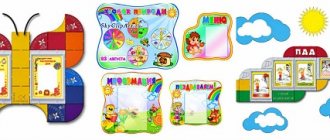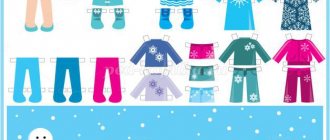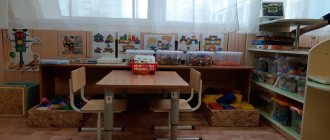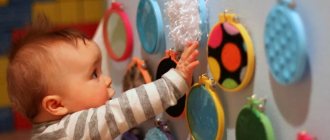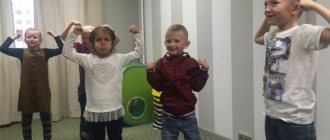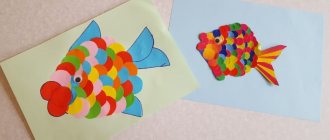Cleaning
Disinfection (or ensuring the sanitary condition of premises in a preschool educational institution) is a necessary preventive measure, consisting of daily and general cleaning.
Specific schedules are drawn up for daily and general cleaning. These schedules for general group cleaning in kindergarten and daily cleaning are approved by the head of the preschool educational institution. And they are required to be hung in the hallway where children dress, so that parents always have the opportunity to familiarize themselves with them.
Cleaning details
We come to the conclusion: when planning a schedule for general cleaning of a kindergarten, it is necessary to take into account the rules and regulations of the sanitary and epidemiological services (SES), which are developed for institutions of this type.
In this case, pay special attention to:
- the absence of children in the premises during major disinfection measures, especially during disinsection and deratization;
- dry cleaning of carpets (once a year according to standards);
- ventilation of sleeping items with open windows: pillows, mattresses and blankets;
- cleaning ventilation shafts (if contaminated);
- dry cleaning or treatment in a chamber for disinfection of bedding (annually).
Watch the video: Nutrition control in kindergarten
Rules for general cleaning in preschool educational institutions
General cleaning in the kindergarten is done monthly. Cabinets, small furniture, toilets, bathtubs, and sinks are cleaned more thoroughly. The entire room must be completely cleaned. The window must be open.
During daily cleaning, cabinet and door handles and radiators are wiped with a damp cloth. During general cleaning, all places where a large accumulation of dust is possible are cleaned:
- radiators;
- skirting boards;
- window sills;
- as well as just furniture;
- open shelves;
- Be sure to wipe down cabinet handles and door handles;
- handles on windows, switches, are thoroughly wiped using disinfectants.
The room where children eat should also be treated. Tables where children eat food are washed with a soap and water solution. After this, they must be washed with clean water without soap and wiped with a dry cloth.
Toys are washed in special containers designed for this purpose. These containers must be marked and signed. This applies to any tool in the garden. All children's bedding, including pillows, mattresses on beds and blankets, is also marked.
SanPiN rules for disinfecting toys when cleaning in preschool educational institutions recommend the following drugs:
- Domestos;
- Sodium hypochlorite;
- Lyolite.
When purchasing a variety of toys, attention is paid to what material they are made of and what age they are intended for.
When cleaning the preschool premises, carpets must be vacuumed daily. But during general cleaning, it is recommended to take the carpet outside for airing, if possible. Dry cleaning of carpets is carried out at least once a year according to SanPiN standards. There are cleaning services that serve preschool educational institutions.
On time, gen. It is advisable to remove cleaning items from the premises:
- all small pieces of furniture;
- toys;
- dishes;
- various equipment;
- roll up and take out the carpet in order to have free access to the baseboards and floor.
Sponges for washing children's dishes should be changed at least once a month.
It is worth paying attention to the fact that basic general cleaning in preschool groups should be carried out once a month. At this time, in addition to basic cleaning, doors and window frames are thoroughly washed. Light fixtures need to be cleaned. Curtains should be washed at least once every 3 months.
Usually, 1-2 days will not be enough for high-quality general cleaning in a group. Therefore, a special schedule for general and sanitary cleaning in the preschool educational institution is drawn up.
An example of such a graph:
- Monday. Cleaning cabinets, furniture, tables and chairs.
- Tuesday. Cleaning the kitchen, dishes, dryers, cutlery.
- Wednesday. Cleaning window frames, sills and doors.
- Thursday. Radiator grilles and radiators, ventilation grilles.
- Friday. Cleaning group walls, floors and baseboards.
During general cleaning, it is better to carry out through ventilation. To do this, open windows in opposite rooms at the same time.
Features of cleaning in kindergarten
Traditionally, wet treatment of all surfaces and premises in preschool education organizations is done at least twice a day. Gyms - after each lesson and at least once a day.
SanPiN recommends carrying out general cleaning and washing of production, storage and sanitary premises of the catering unit, as well as bedrooms and rooms for group classes, followed by disinfection of equipment and equipment on a monthly basis.
Epidemics of infectious diseases may lead to the organization of additional cleaning activities in order to prevent their spread.
Therefore, when planning a schedule for general cleaning in the garden, you need to take into account the likelihood of it being carried out outside the schedule during seasonal outbreaks of diseases.
General cleaning of all premises and equipment must be carried out once a month.
Cleaning of window glass in preschool premises should be carried out: Windows inside and outside are cleaned as they become dirty, but at least 2 times a year.
Read carefully how to properly clean windows:
To enlarge the picture, click on it
Necessary tools and equipment
It’s convenient to have the necessary tools at hand when cleaning the premises in a kindergarten. But they must be stored out of the reach of children. All cleaning equipment must comply with SanPiN requirements.
Inventory:
- bucket;
- pelvis;
- mop;
- vacuum cleaner;
- soft cloths;
- sponges;
- special soda, it is given out in a preschool institution;
- dish soap;
- soap;
- paper towels;
- bleach;
- wet wipes;
- latex gloves;
- robe.
What detergents and cleaning products can be used to clean premises in a kindergarten for cleaning and disinfection? It should be noted that there are certain methodological recommendations called “Open control over the organization of sanitary conditions and nutrition in preschool educational institutions.” Here you can find recommendations for using cleaning products:
- "Progress";
- Soda ash$
- Sanit;
- "Agatha".
They are hypoallergenic and are acceptable for use in preschool educational institutions.
Rules for cleaning the toilet in kindergarten
Special attention should be paid to cleaning the toilet premises in preschool educational institutions. Recommendations:
- Toilet bowls and bathroom sinks must be cleaned regularly with special brushes or brushes. Be sure to use disinfectants.
- The main point of toilet cleaning is daily cleanliness. For serious cleaning of the seat, it is not recommended to use compositions containing abrasive particles or brushes with hard bristles. It is better to take sponges for work, they will not damage the surface layer.
- It is recommended to use gloves when cleaning the toilet. They are waterproof and durable to prevent accidental contact of hands with the surface of the water being cleaned.
- To thoroughly clean the toilet from all contaminants and bacterial deposits, you should first drain it. The interaction of cleaning compounds with water reduces the effectiveness of cleaning.
- It is recommended to drain the cistern by shutting off the water supply and then draining it.
- It is advisable to minimize the use of bleach when cleaning plumbing fixtures.
- It is recommended to pour boiling water into the working container monthly. This is also the prevention of blockages.
- It is worth paying special attention to children's potties in junior and nursery groups when cleaning premises in a preschool educational institution. A prerequisite is their sanitary treatment. They should be washed with a brush or brushes with cleaning agents after each use. It is advisable to pour boiling water over the pots.
After treatment, brushes and brushes are soaked in a special disinfectant solution.
Ventilation
Particular attention should be paid to ventilation of the room. To understand how long to ventilate, you need to know what the humidity and temperature in the room are.
There are certain standards for optimal temperature. For example, for a room where children play, it is 19-20 °C. The temperature in the toilets is 20-22 °C. Accordingly, if the temperature rises higher, you should definitely open the windows and ventilate the room.
It is necessary to ventilate the premises when cleaning in a kindergarten:
- from the morning until the children arrive;
- during a children's walk;
- in the evening, when the children went for an evening walk or home.
It is recommended to ventilate the room for at least 10 minutes. After the children wake up, that is, after a lunchtime nap, the bedroom must also be ventilated.
Cleaning of main premises
Typically, premises in preschool educational institutions are cleaned twice a day. Once in the morning before the children arrive. Another time after the children's nap. It must be carried out quite carefully, with certain adherence to the schedule of this work.
Daily cleaning is wet cleaning. It allows you to ensure cleanliness in the bedroom, as well as in those areas where children play and eat.
Cleaning of children's bedrooms in kindergarten is carried out twice after rest - daytime and nighttime sleep. If there is no overnight stay in groups, then it is necessary to do it early in the morning before receiving children.
If there are insects, mosquitoes and flies in the room, especially in the summer, then it is allowed to use various:
- traps;
- flycatchers;
- sticky tapes.
In group rooms, it is mandatory to wet clean the tables and chairs in the preschool after each meal. It uses household products that have passed a certain certification and are environmentally friendly and do not contain various allergens. After treatment with cleaning agents, it is necessary to rinse the furniture with clean water.
It is recommended to use special antibacterial wet wipes during daily cleaning. For example, they will be quite convenient for wiping dust from window sills and furniture.
The kitchen is also cleaned daily. Floors and walls are washed with special disinfectant solutions. If there are hobs or a hood, these should also be treated.
Cleaning features:
- Hoods and stoves are cleaned with products that have hypoallergenic properties.
- Tiled walls are wiped with a soap and water solution, like all rooms when cleaning in a preschool educational institution.
- Dishes should be washed especially carefully after children eat. First, it is cleaned of food using a sponge with detergent or soda. Be sure to re-treat the dishes with plain hot water. If possible, it is also advisable to boil it.
Cleaning and disinfection in the kindergarten is mandatory when children are not in the room. That is, either late in the evening after the group is closed and all the children have already been taken away, or early in the morning. The floor should already be dry when the children arrive, so as not to expose the children to injury.
Dust and various germs can accumulate on furniture. And children have constant contact with toys. Therefore, it is necessary to pay special attention to them. It is not recommended to use soft toys in kindergartens. Plastic and rubber ones are preferable - they are easier to clean. Toys should be washed every day. It's better in the evening, after the children have gone home.
It is recommended to use a soap and soda solution. If we are talking about doll dresses, they also need to be washed when they get dirty, and then ironed. Toys should be dried outdoors. If this is not possible, then under an open window. When cleaning the premises of a preschool educational institution (if there are any in the group), soft toys must be treated using quartz treatment for about half an hour. This must be done at least once a week.
Treatment and cleaning of premises in preschool educational institutions with a special composition against dust, bacteria and allergies to mites must be carried out in the children's bedroom. This especially applies to:
- beds;
- pillows;
- mattress on the bed;
- blankets
It is recommended to change bed linen at least once a week or when soiled.
Quartz treatment is also carried out according to a schedule in all rooms at least once a day for 15 minutes.
Quartz schedule in kindergarten.
| TIME | PREMISES |
| 7:00–7:30 | Bedroom, corridor, group room. |
| 10:30–11:30 | Corridor, bedroom. |
| 13:30–14:00 | Group room. |
| 14:00–14:30 | Corridor. |
| 15:30–16:30 | Bedroom. |
| 17:00–17:30 | Bedroom, corridor, group room. |
Similarly to this example, you can draw up a schedule for ventilation of premises and wet cleaning in a preschool educational institution.
Cleaning the corridor
Usually in the hallway there are lockers for children's outerwear and shoes. As well as benches and drying racks. The floor cloth for cleaning in the hallway should be separate. You should not wash common rooms and hallways with just a rag. The drying rack, benches and cabinets are wiped with soapy water. Then rinse with plain clean water. The floor is washed with regular bleach added to the water for disinfection.
Dry cleaning
In kindergartens, you can see carpets in almost every playroom. They are used for the convenience and comfort of children. Carpets also serve as protection against cold floors, as children often play while sitting on them. Any carpets and coverings require special care when cleaning in a preschool educational institution. According to SanPiN standards, dry cleaning of carpets in preschool educational institutions should be carried out at least once a year, and preferably more often. The carpet must be vacuumed every day.
If possible, it is better to carry out wet cleaning in all rooms of the kindergarten with a washing vacuum cleaner. If this is not possible, then a conventional device collects dust from the floor and carpet.
What to do with windows?
Windows in groups during general cleaning in the kindergarten and inside, on the street side should be treated 2 times a year. In spring and autumn. If there is contamination, more often. If there is a lot of dirt and dust on the frames or between them, it is advisable to first go over them with a dry brush. It is better to wash the group's windows inside first, and only then outside. Dirt on the outside will be clearly visible through clean interior glass.
Frames are cleaned first, glass second:
- First you need to apply a cleaning agent to the glass and frame using a sponge.
- Leave for a while so that the dust and dirt get a little wet.
- Then go over the glass with a scraper. And on the frame with a damp cloth.
- When performing general cleaning in a kindergarten, it is more convenient to apply the solution from the outside using a telescopic brush on high frames. This brush has a retractable handle. This allows you to adjust its length.
- The product is applied to the sponge on one side of the brush. Use a scraper on the other side of the brush to remove excess moisture.
- After all the moisture has been collected with a scraper, you need to wipe the glass until it shines with a soft cloth or paper napkin.
- Carry out these steps first on one side of the frame, and then on the other.
It is better to use 2 containers - a basin or a bucket. One will contain a soap and water solution, the other will contain clean water.
Caring for floors during wet cleaning in preschool educational institutions
When performing daily wet or general cleaning, the floor must be washed last. First you need to sweep it to collect all the debris. Then take a bucket of warm water and add a little bleach to it. You can add regular ammonia or chlorhexidine to the water. These antiseptic products will disinfect the floor surface. Along with the floor, attention should also be paid to the baseboards.
Cleaning the catering area in kindergarten
The kitchen is a room on the cleanliness of which the health of each student depends. SanPiN standards strictly regulate the requirements for the cleanliness of catering units in kindergartens. Kitchen cleaning must be done daily. In addition to washing floors, such cleaning includes: removing dust and food debris from work surfaces, wiping walls and window sills, washing cabinets, radiators and lamp covers. Work tables should also be washed after each food preparation using hot water and detergent. Tables for working with raw products must be disinfected at the end of the shift.
Washing and storing dishes in the catering preschool educational institution also has its own nuances:
- utensils for employees and students should be stored separately;
- all utensils are marked according to their intended purpose;
- Washing dishes is carried out in two stages: first, the dishes are washed with hot water and detergent, then rinsed thoroughly.
Read more about washing and processing dishes in preschool educational institutions in the corresponding article.
What is the difference between general cleaning of premises in a preschool educational institution and daily cleaning?
The main difference between daily and general cleaning in a kindergarten is that the latter is carried out monthly. It will also include cleaning of all surfaces and places using cleaning agents that are permitted by SanPiN. The only difference between these cleanings is that the gene. cleaning covers a larger volume and is done more thoroughly.
Daily cleaning consists of:
- Cleaning of main premises. This includes a group room for games and meals, as well as a bedroom.
- Cleaning the corridor and toilet.
- Ventilation of premises.
The issue of cleanliness in preschool educational institutions is one of the most important. Therefore, cleaning in a preschool educational institution must be carried out much more thoroughly than, for example, in a school. Because there are small children in the garden. If we mean very young nursery groups, then small children often put everything they find in their mouths. Therefore, hygienic requirements for cleaning premises and standards, especially in nursery groups, must be the most stringent. First of all, the health of children depends on cleanliness in preschool educational institutions.
Cleaning premises in preschool educational institutions - basic rules
SanPiN regulates the basic procedure for cleaning premises in all preschool institutions, which is mandatory. Twice a day it is necessary to carry out wet cleaning using safe detergents. Wet cleaning includes wiping surfaces from dust and washing floors. Bedrooms are cleaned after quiet time, meal rooms after meals, and gyms after classes.
Wet cleaning of premises in a preschool educational institution also includes mandatory washing of all objects with which children interact: toys, furniture, sports equipment, etc. All tables must be washed with soap before and after meals. It is also necessary to clean chairs and changing tables in nursery groups. Sports equipment is cleaned after each child's gym session. Mats are cleaned with soap and soda solution.
Particular attention must be paid to washing and disinfecting bathrooms. Toilets, cisterns, shower trays, sinks, taps must be washed with soap and treated with a disinfectant. Children's potties should be cleaned with a brush and soap after each use.
